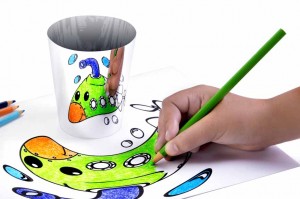
These are not normal times. With schools closed all over the world, millions of school children have been sent home along with parents, all attempting to work from home. Light, lasers and optics are fascinating topics, and even if you are in the photonics industry, you may need some assistance in teaching them. Here we provide basic tips for you, and a bunch of light- and optics-related home learning ideas.
How do your children learn best?
Some children do very well with independent projects, others really struggle to stay focused and follow directions. Is a zoom study group with classmates an option for a child who works well in groups? Does an independent learner need a space of her own? Talk with your children and find out how they learn best and see what you can do to set them up for success.
Start slow and be flexible
While sticking to a schedule can be very helpful, organizing and setting that schedule in this new reality will probably take some time, effort and a trial and error approach. Pay attention and see if you can organize around the new rhythms that are emerging for your family.
Try to coordinate the time for students to work independently with the time you need to be most focused on work. Set clear expectations and start with a small amount of independent time. If children are working and learning on their own for even a couple of hours per day, you’re doing great.
Schedule regular time for a parent to lead and support learning when you can dedicate your full attention to the children; splitting your attention between teaching and working is guaranteed to be frustrating for everyone.
Give it time. It’s easy to expect everyone to be “on” and ready to go on a schedule just because it’s written down. But it may not go that way. If things don’t go as planned, embrace it, and try something different the next day. Be sure to tally up the successes at the end of the day and be generous with what you record as success which will look different under these new circumstances.”
Give children tools and resources for being independent
Parenting and working at the same time is easier if children have some options for how to manage themselves. Hang a note on your door to remind them that it’s work time and you’re not to be interrupted. Generate a list of activities (not all educational) that students can look to when they have to occupy themselves: a reading list, art projects, quiet games, prepare a meal, journaling, etc.) Let children know you appreciate their patience.
Share what you know and love
If light, optics and color are what you love, Laser Classroom can help you share them with your children with loads of simple but powerful lessons and activities.
Children love light and color because it’s engaging and familiar, but as you may well know, it’s a short leap from “light bends” to quantum physics. We can help you break it down and make it fun as well as educational.
How we see
We always start with the most basic idea related to light and optics – we need a light source in order to see. While this may seem like to simple an idea to start with, consider that one study asserts that fully ¼ of college students believes that seeing happens because of something emitted from the eyes! Read about the phenomenon I like to call “laser eyes” HERE.
In the Light is for Seeing Activity, elementary students come to understand the fundamentals of how light allows us to see. Students build a Classroom Cave and engage in an investigation to refine their understanding of how light illuminates objects and allows us to see them. Students predict, test, change a variable and test again, to learn the process of science along with the content: light allows us to see.
Download the lesson HERE.
What exactly IS color?
Why does green and red paint make mud, while green and red light makes yellow? Read a straightforward explanation and a clue for engaging your children HERE.
Ask your children this: Why IS it that one M&M is red and another one is green. Of course, it all has to do with light! Can YOU sort the M&Ms with just a red light? I can nearly guarantee that they’ll say they can. And I can guarantee that they really can’t! THIS is one of my very favorite lessons for kid of ALL ages.
And if you happen to have a red and a green laser pointer in the house, THIS lesson teaches the same concept, with gummy bears!!
A simple homemade microscope
A drop of pond or lake water becomes a spherical lens when suspended from a syringe. Shine a green laser through the center of the water drop and bring to life the tiny world inside! Download the instructions and an explanation HERE.
Anamorphic art optical illusion
Anamorphic Cylinder Art is an optical illusion developed by artists as far back as the 1600’s as a way to hide and code messages in their artwork. When images are transferred and stretched to a “morphed” grid they are distorted in a very specific way so that they can only be resolved with a cylindrical mirror. All Morphed Up is a simple and inexpensive kit, for students to use the technology of a curved mirror, and the science of optics to explore of the art of distortion and the apply a mathematical grid drawing technique – and it all develops 3D skills to support engineering practices! CHECK IT OUT.
Written by Colette DeHarpporte, Founder, Laser Classroom.































 Back to Blog
Back to Blog

























